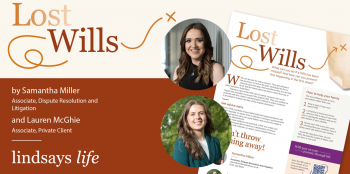As in any contractual relationship, disputes will arise between landlords and tenants. One recurring example is where the landlord wishes to recover possession of a tenanted property. Whilst court action is the last resort in such a situation, this becomes unavoidable when a tenant refuses to vacate their landlord’s property.
However, it is possible for landlords to simplify the court process by thinking ahead and applying the following advice when framing their tenancy agreements.
1. Choose your tenancy type wisely
Currently the most common types of private residential tenancy are either an Assured Tenancy or a Short Assured Tenancy. It is recommended that landlords create Short Assured Tenancy agreements. By doing so, a landlord has a mandatory right to recover possession of a property at the end of the agreed period of let. This is useful in situations where the landlord only wishes to rent the property for a limited period of time.
In order to create a short assured tenancy, a landlord must:
- Ensure that the initial duration of the period of let is for 6 months or longer. A common mistake is for leases to be drafted in a way in which the initial period of let runs one day short of 6 months. This situation can be avoided by including the words “all days fully inclusive”.
- Serve the prescribed pre-tenancy notice (Form AT5). This must be served before the creation of the tenancy i.e. before the lease is signed. Landlords should be able to evidence that the Form AT5 Notice was served prior to the creation of the lease. A good practice is to date and time the signing of both the lease and the AT5 and ensure that a copy of the Form AT5 Notice is retained.
2. Draft your tenancy agreement effectively
It is often the case that landlords wish to repossess a property as a matter of urgency. Common reasons include rising rent arrears or damage caused to the property by the tenant. However, before a landlord can raise a court action he is required by law to serve the tenant with the relevant notice or notices.
The law is such that notice periods can be complex and often the day of service can be crucial to the length of notice required. However, a useful tip for all landlords is to ensure that they narrate the grounds for repossession, outlined in Schedule 5 to the Housing (Scotland) Act 1998, in the lease. This means it is sometimes possible for a landlord to serve notice by Form AT6 alone. A Form AT6 does not terminate the tenancy but informs the tenant that the landlord intends to raise court proceedings to repossess the property. This is the quickest route to raising a court action but is only available where the lease provides for this procedure to be used.
This rule only operates in respect of some of the grounds for repossession and as the law is quite complicated in this area, landlords are best advised to seek legal advice on this point.
If you would like more information, our Private Housing and Letting team would be happy to help.








